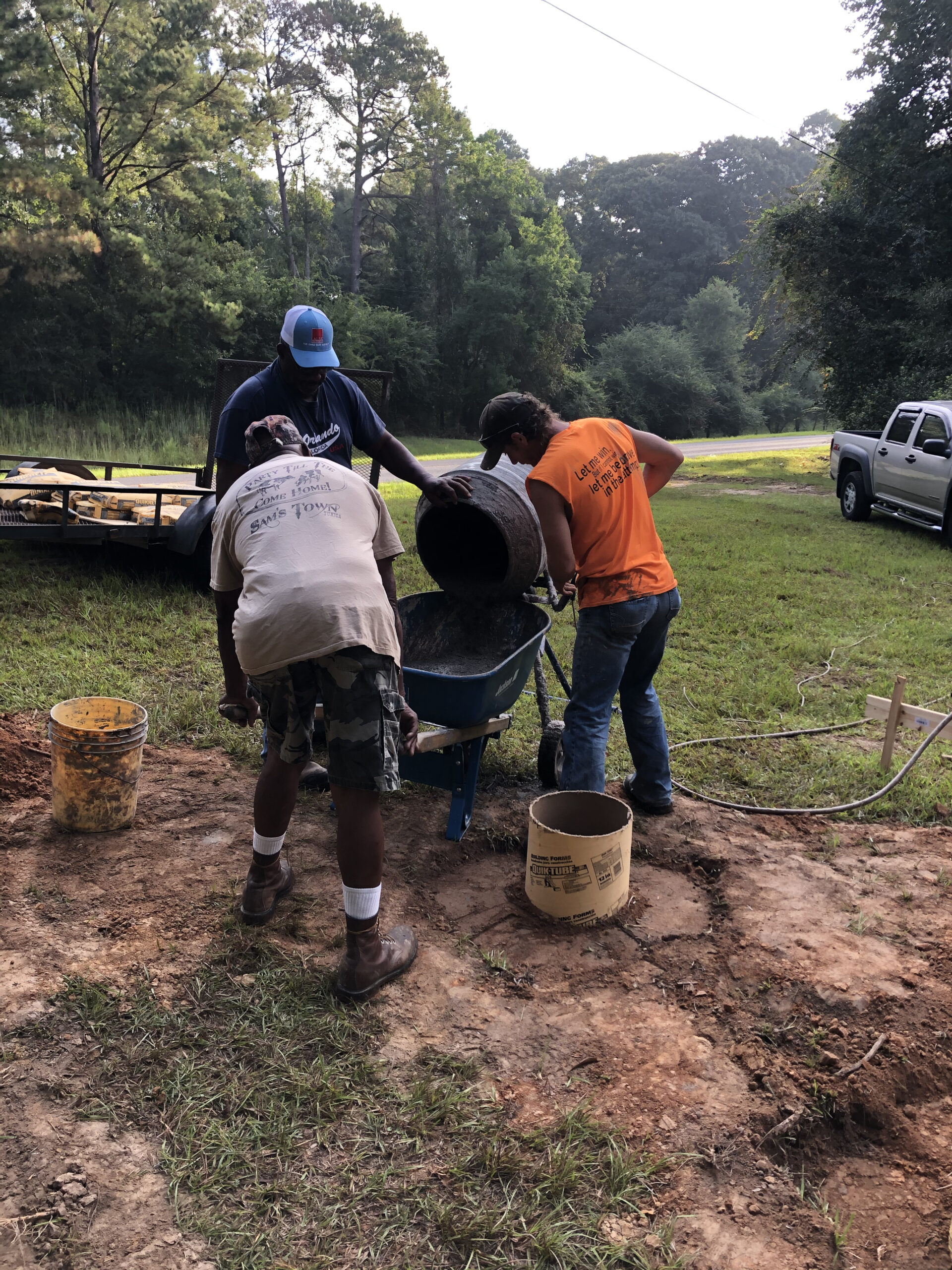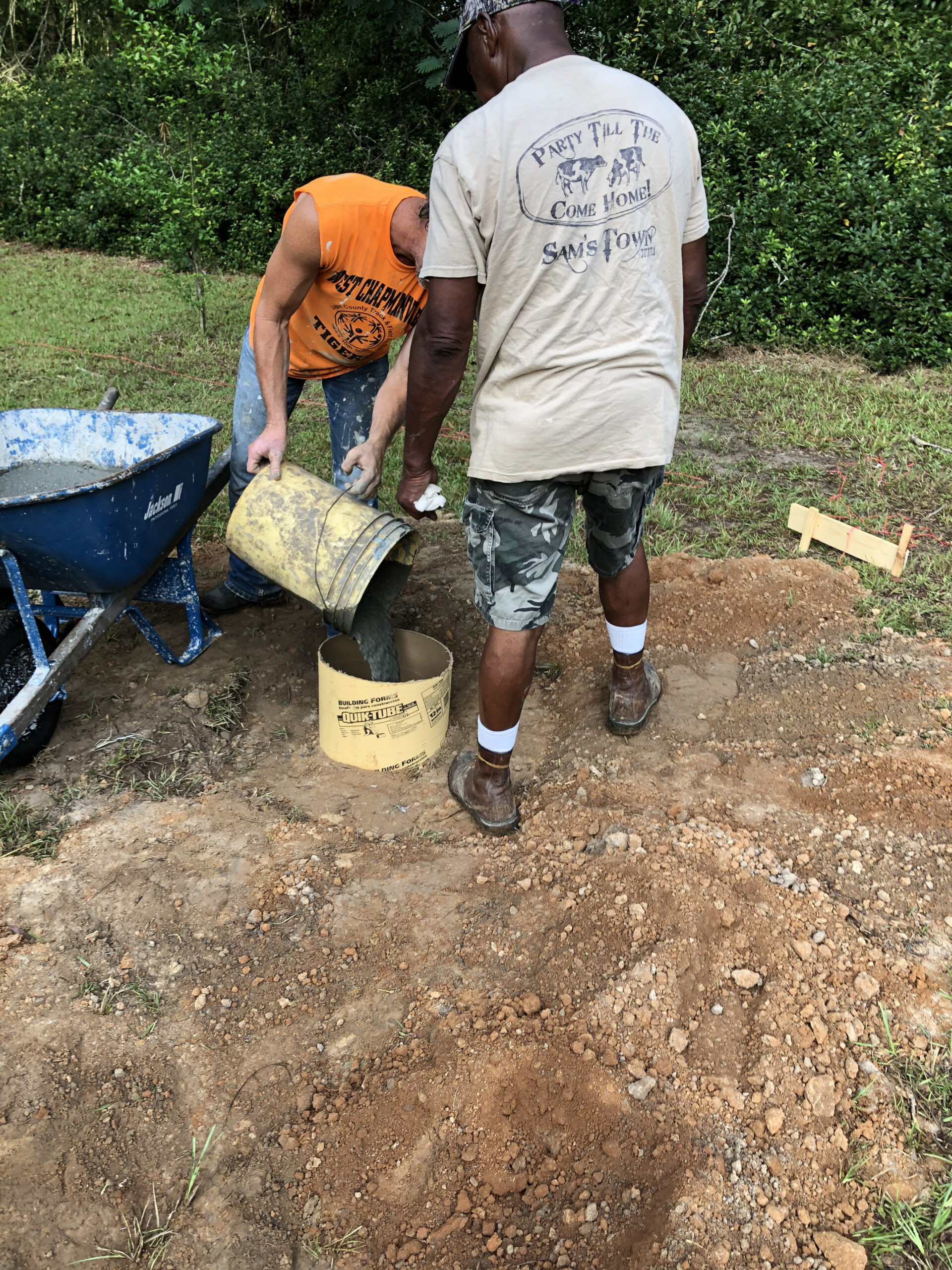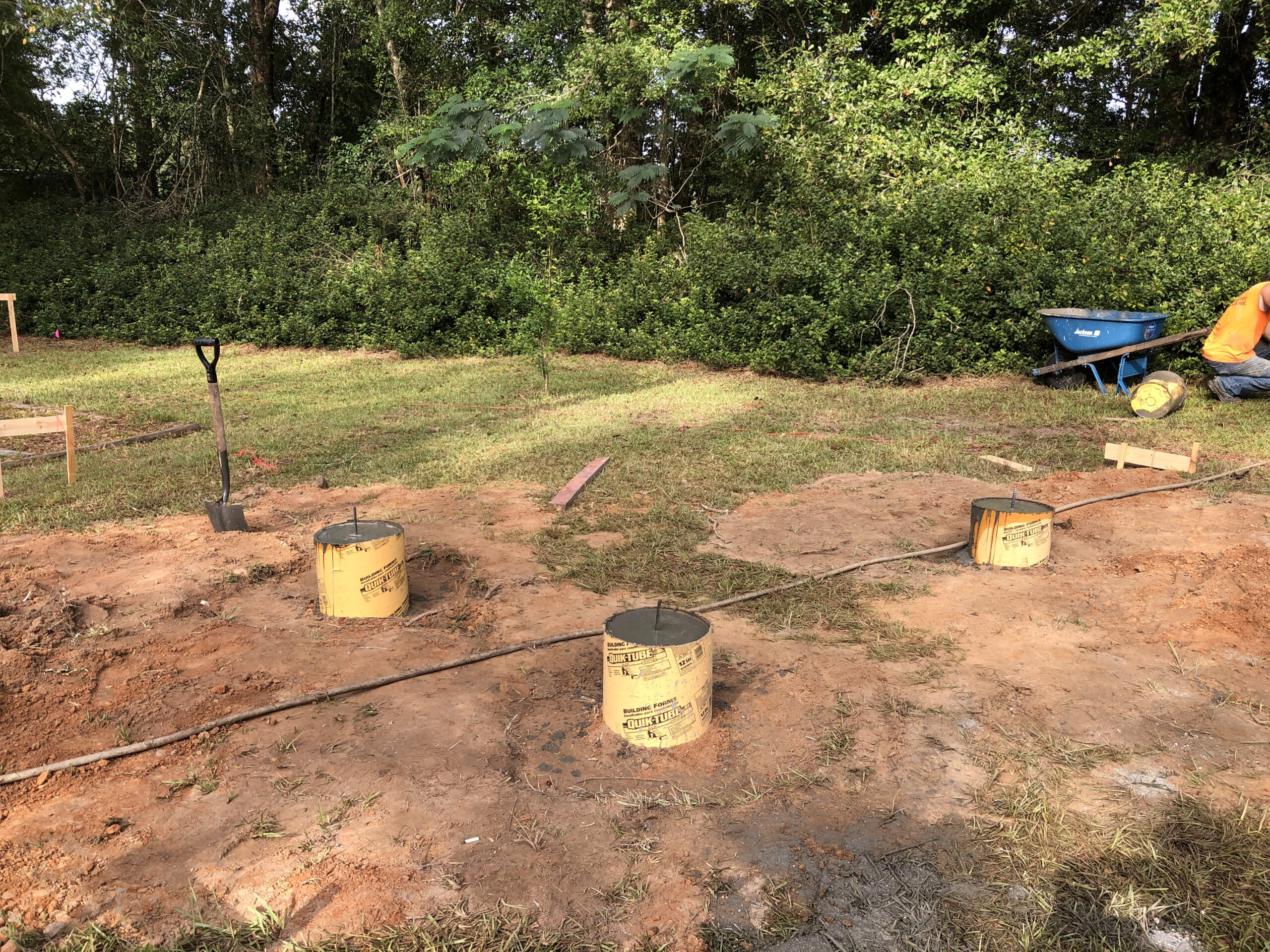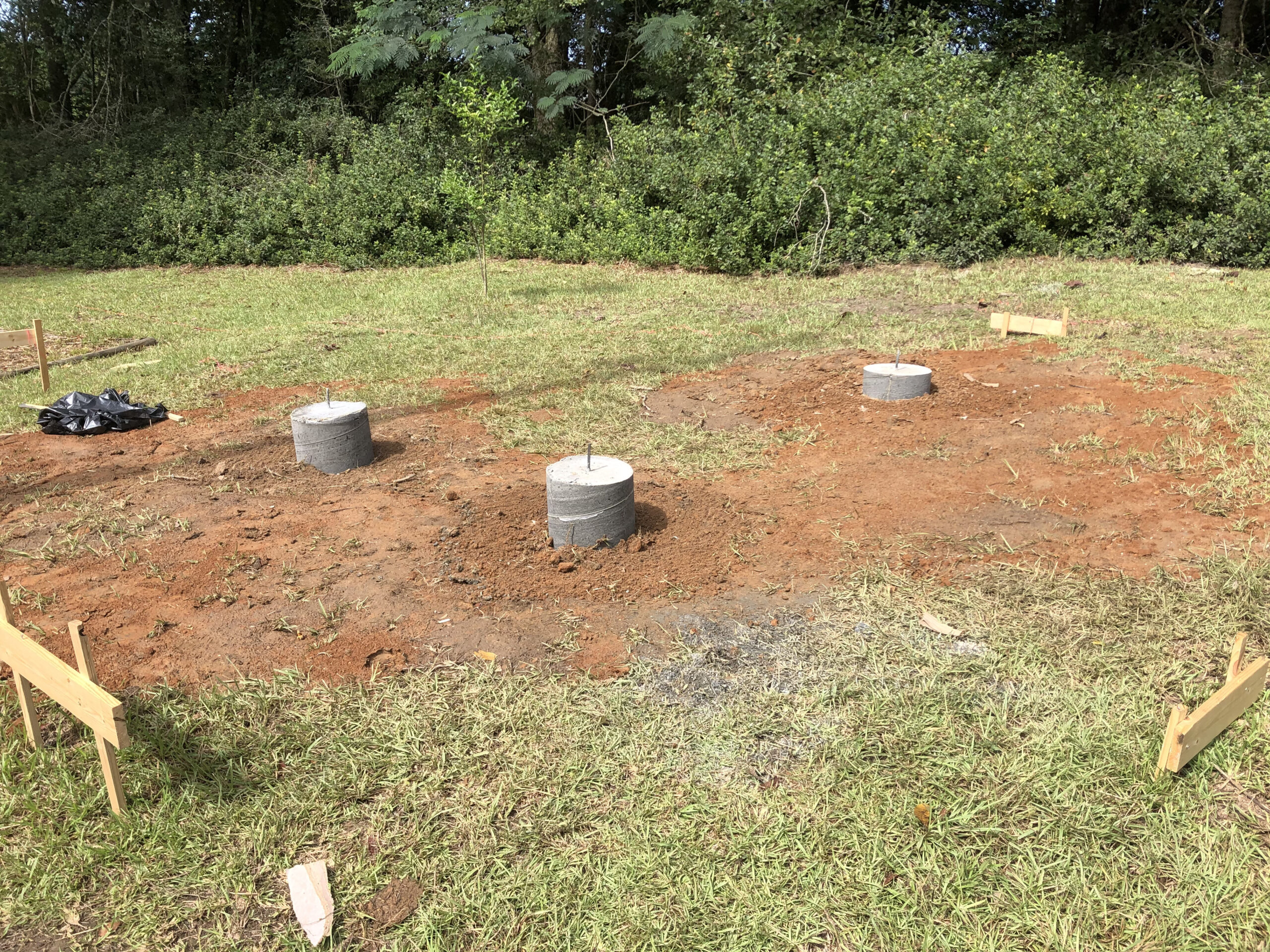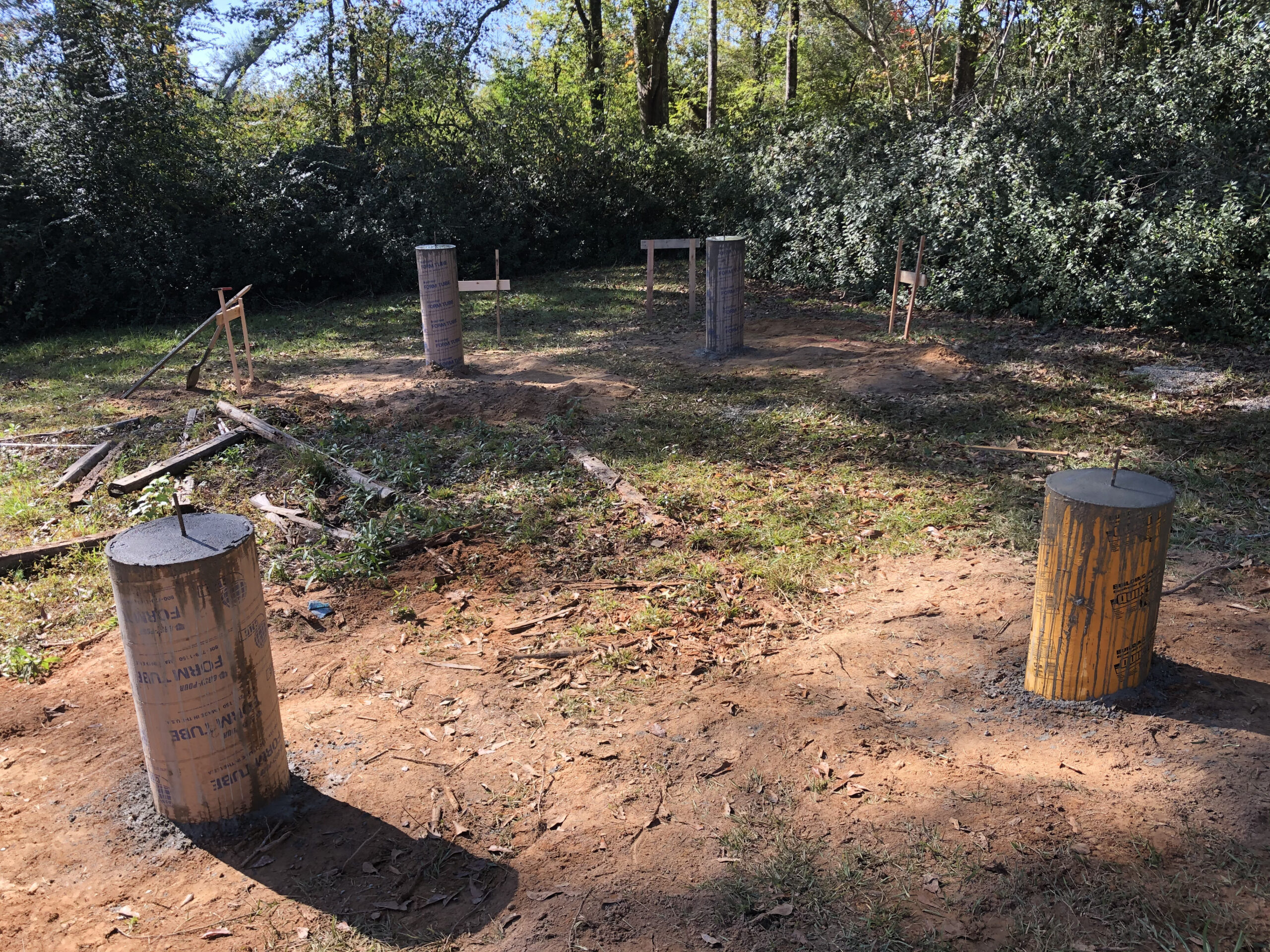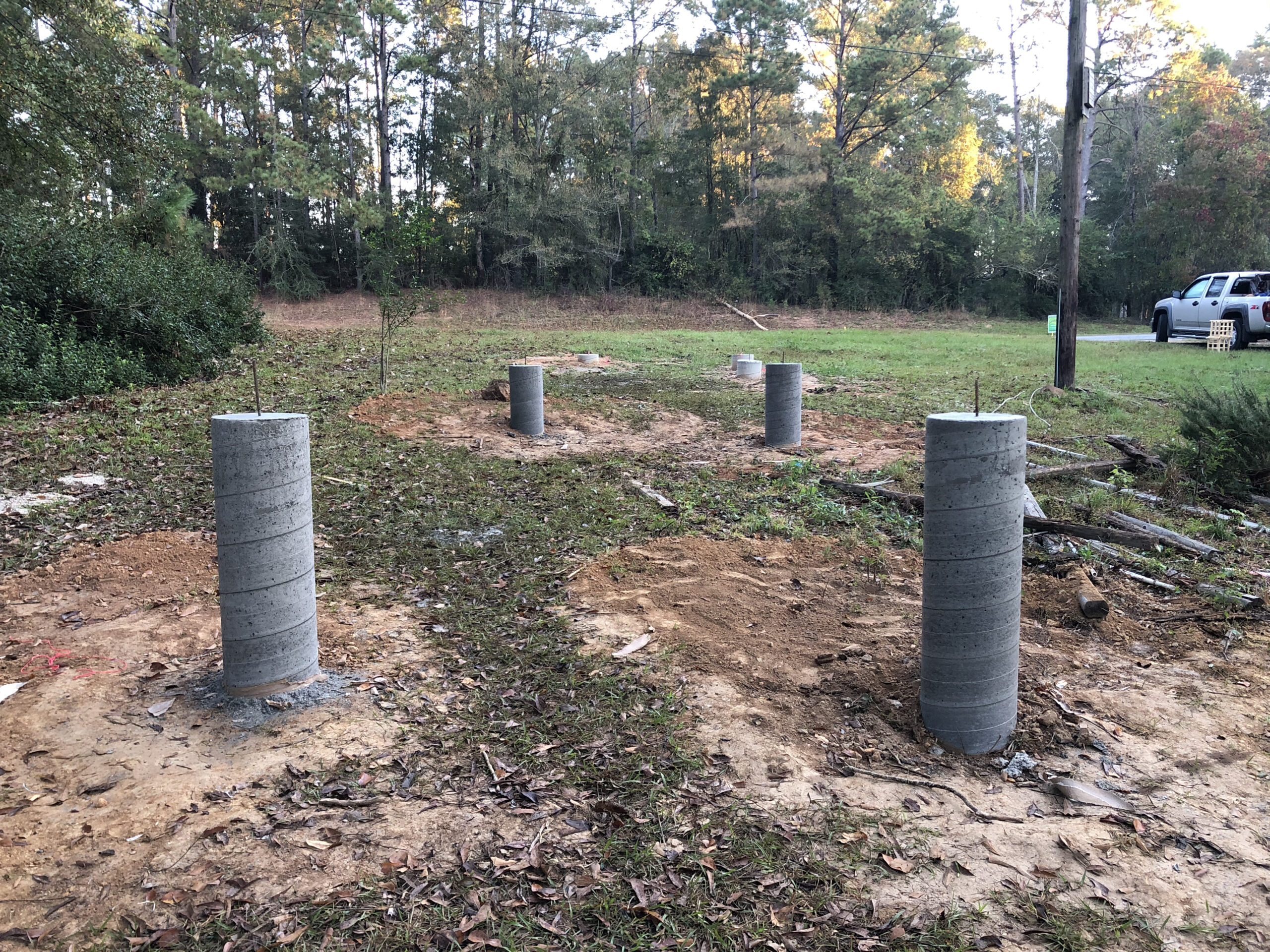For the one and only time on this project, the height of a concrete pier wouldn’t matter; the very first one (#1 in the diagram) could be as high as I wanted. Every subsequent pier, however, would need to be aligned precisely with this one.
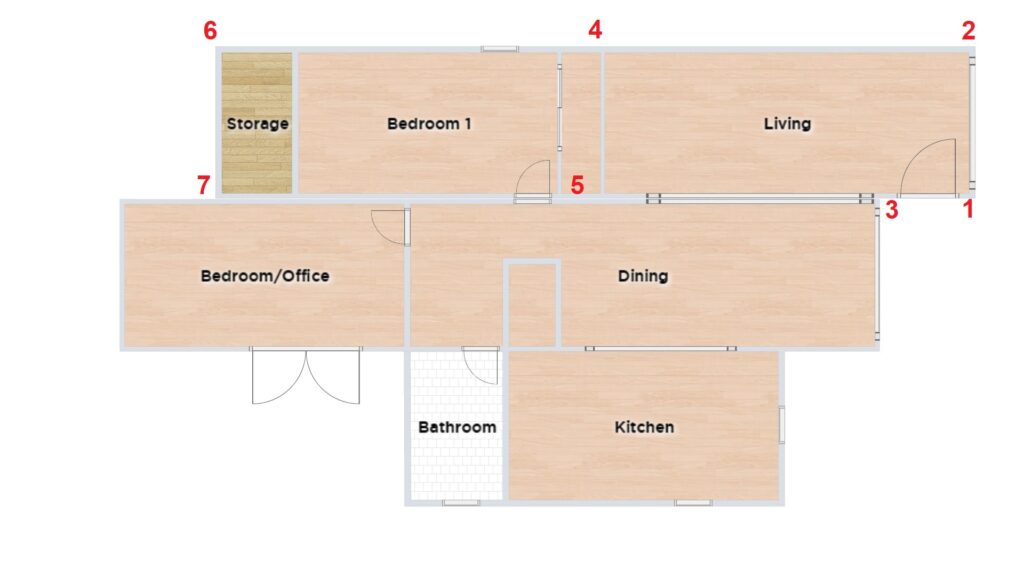
This where the laser level comes in. For short distances and on projects where slight discrepancies might not matter much, there are several simpler (and cheaper) options: line level, water level, or even resting a spirit level on a board. But none of those methods would ensure accuracy over the distances I’d be looking at: from Pier 1 to Pier 6 was over 40 feet.
Laser levels are available in a great range of prices and features. Based on my research before buying mine, what mostly distinguishes them is the brightness of the laser, which affects both the distance over which the line can be seen and whether it works indoors or outdoors or both. Another nice feature is the ability to self-level, which means you don’t have to get it perfectly level yourself.
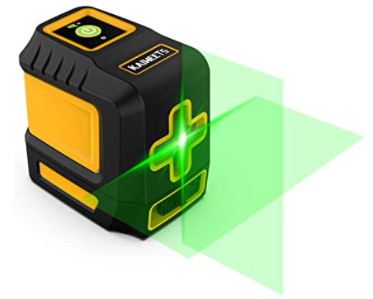
I chose the Kaiweets T03 ($58.99 on Amazon), which promised a 98-foot green laser line that would be visible indoors and out. It also self-levels if you get it to within 4 degrees of level. It can be attached to a standard camera tripod, which would be helpful on my lumpy and sloped front yard. It ended up working great and met my needs well. Maybe most important was that I, a total novice, figured out how to work it. (As with pretty much everything these days, I read the reviews before buying.)
So with the sonotube at Pier #1 at the height I wanted, it was a fairly simple matter of using the level to mark lines on the other tubes. I then sawed off the tops of the tubes down to the lines.
I gave myself a day between the hole-digging and the concrete-pouring so I could place the Redibase footings accurately, backfill and tamp the soil, brace the sonotubes in plumb position, and cut them to the right height.
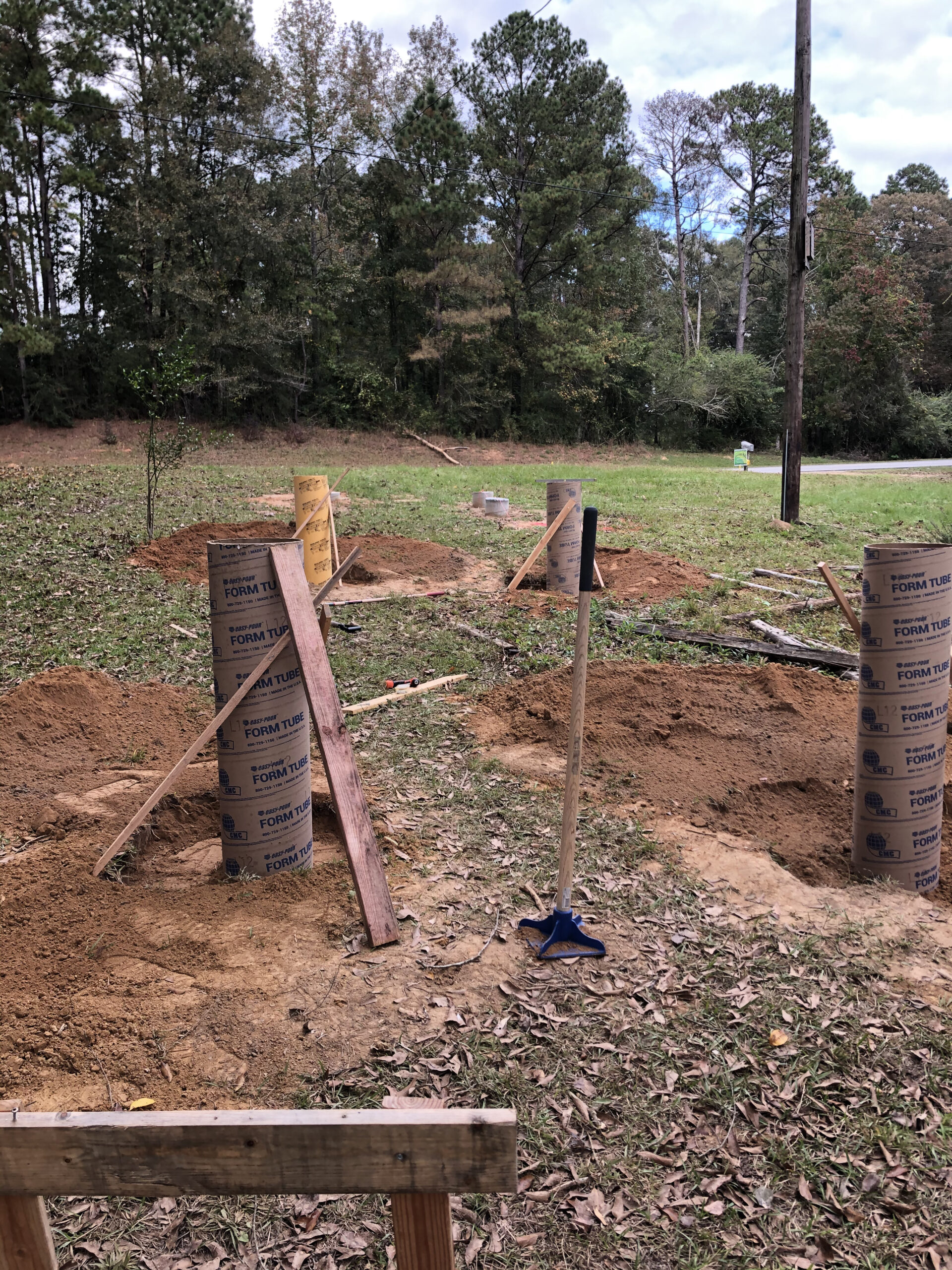
When I say “right height,” that doesn’t mean that all the piers are the same height. If you look closely, you’ll notice that the bottom of the sides of the container are a bit higher—about an inch—than the corner posts. This meant that piers 4 and 5 would need to be an inch taller than the others.
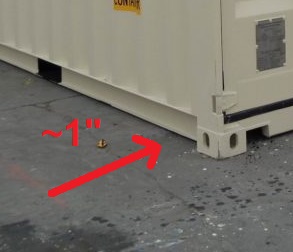
Mr. Sammy, who had done the digging for the piers, came back with his guys and a little cement mixer.
The rest of the work on the piers went smoothly, except for the design flaw I discussed earlier. We’ll do better on Container #2.
Oh, and by the way, when the first container arrived and the crane lifted it onto the piers, it fit perfectly. Our measurements worked!
Here is Liberace singing, “Cement Mixer.”
